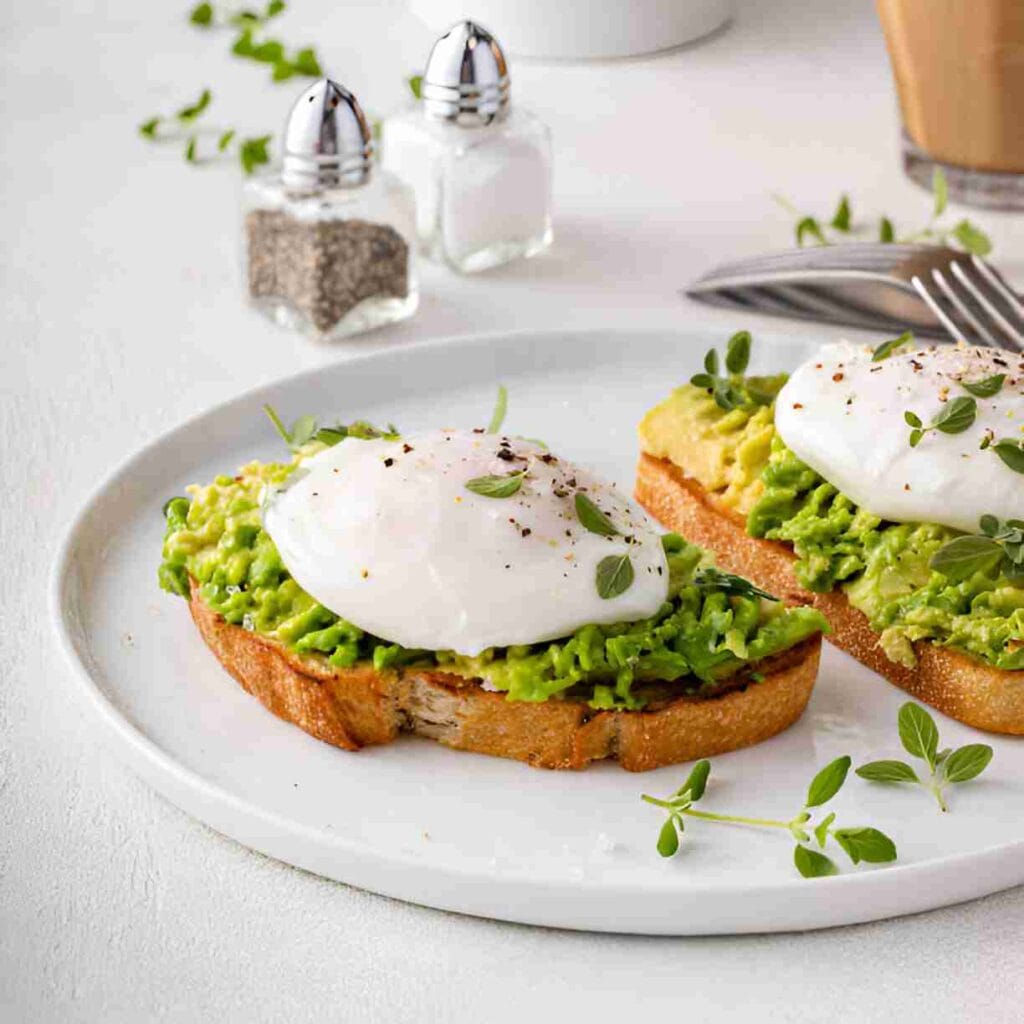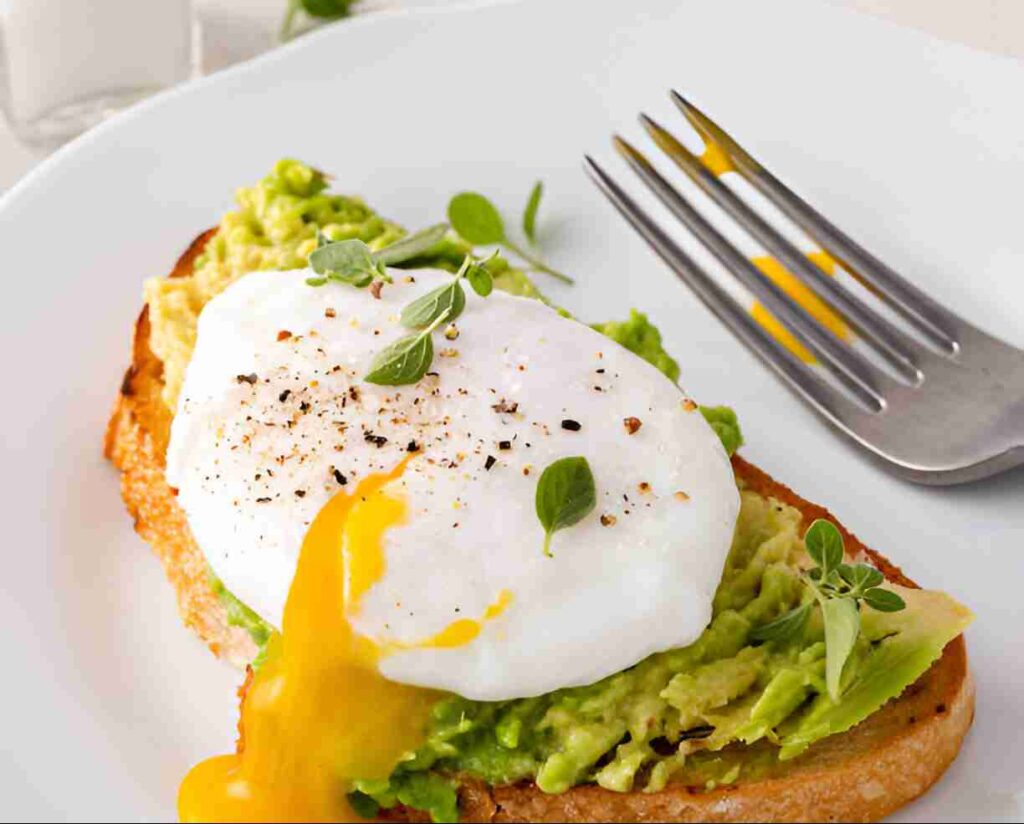If you’ve been looking for an easy and flavorful way to start your day, poached eggs are the answer. When prepared correctly, they bring a delicate texture and rich flavor that can elevate any meal. In this detailed article, we’ll dive deep into poached eggs, including their benefits, ingredients, cooking methods, and serving suggestions. Whether you’re a seasoned chef or a beginner in the kitchen, you’ll discover how gratifying it is to master the art of poaching eggs.

Table of Contents
Why You’ll Love Poached Eggs
Perfect for Families
One of the best things about poached eggs is how versatile they are. Whether it’s a quick breakfast before school or a leisurely brunch with friends, poached eggs can fit into any family routine. Kids love them on toast, adults enjoy them on salads, and they can easily be prepared for one or a crowd! You’ll find that they make breakfast feel effortlessly fancy, making them a go-to choice in our household.
Nutritional Benefits
Poached eggs are packed with protein, essential vitamins, and good fats. They are low in calories yet high in nutrients, making them a perfect option for anyone looking to maintain a healthy diet. Plus, they are made with simple, wholesome ingredients that you probably already have in your kitchen. With just two eggs, a splash of vinegar, and water, you can create a delicious and nutritious meal.
Flexible and Budget-Friendly
Cooking at home doesn’t have to be expensive, and poached eggs are a perfect example. With minimal ingredients, you can whip up a satisfying dish that doesn’t break the bank. They can also be easily adapted to fit various diets, allowing you to switch up flavors with different sides or toppings without spending a fortune.
Essential Ingredients for the Recipe
Ingredients
- 2 large fresh eggs
- 1 tbsp white vinegar (optional)
- 4 cups water
- Pinch of salt
Main Ingredient 1: Eggs
Eggs are the star of this dish. They are not only delicious but also loaded with protein and essential nutrients like B vitamins and vitamin D. If you’re in a pinch, you can even use egg substitutes or carton eggs. However, fresh eggs indeed yield the best results when poaching.
Main Ingredient 2: Apple Cider Vinegar
Apple cider vinegar plays an important role in helping the egg whites coagulate quickly, resulting in a neat poached egg. In its absence, you can use white vinegar or even lemon juice. Both work well to maintain the egg’s shape.
Main Ingredient 3: Water
Water may seem like a simple ingredient, but the right amount and temperature are crucial for poaching eggs. Aim to use filtered water whenever possible for the cleanest taste. And remember, you want to keep the water just below boiling for optimal results.
Ingredient Preparation
Step 1 – Crack the Eggs
Start by cracking each egg into a separate small bowl or ramekin. This makes it easier to slide them into the pot without breaking the yolk. If you prefer, you can strain the egg yolks to remove any loose egg whites, which helps with presentation.
Step 2 – Prepare the Water
In a saucepan, fill with enough water to cover the eggs (about 3 inches deep), then add the apple cider vinegar. Heat the water until it just starts to simmer; you should see tiny bubbles forming on the bottom of the pot. This step is key, as too high a temperature will cause the eggs to break apart.
Step 3 – Poaching the Eggs
Using a slotted spoon, gently swirl the water to create a whirlpool effect. This motion helps the egg whites wrap around the yolk. Slowly lower the eggs into the center of the whirlpool. Let them poach for about 3-4 minutes for runny yolks or longer if you prefer them firmer.
Step-by-Step Cooking Instructions
Step 1 – Initial Preparation
Before you start cooking, have a plate ready to place your poached eggs on, along with paper towels to absorb any excess water. This setup will streamline the process and make it less messy.
Step 2 – Ingredient Assembly
Once your water is at the right temperature, gently slide the eggs from the ramekins into the water. Avoid overcrowding the pot; you can always cook in batches if you’re making several servings.
Step 3 – Cooking and Finishing Touches
Keep an eye on the eggs! After 3-4 minutes, use a slotted spoon to check the firmness of the whites. They should look opaque and hold their shape. Remove them from the water and place them on your waiting plate, garnishing them with salt and pepper to taste.
Tips for an Even Tastier Version
Adding Extra Ingredients
Don’t hesitate to add some flair to your poached eggs! Try topping them with sautéed spinach, aromatic herbs like chives or parsley, or even a sprinkle of cheese for added flavor.
Techniques to Enhance Flavor
Consider drizzling with hot sauce or a homemade hollandaise sauce to elevate your eggs even further. A pinch of smoked paprika or nutritional yeast can also add a delightful twist.
Adjustments for Preferences
If you’re following a special diet, consider incorporating plant-based toppings like avocado or roasted tomatoes. Poached eggs are adaptable and can easily fit gluten-free, keto, or vegetarian lifestyles.
Recipe Variations and Adaptations
Vegetarian Option
For a vegetarian take, add roasted vegetables such as zucchini or bell peppers next to the poached eggs. They complement the flavors beautifully.
Gluten-Free or Low-Carb Option
This recipe is naturally gluten-free and low-carb as is! Pair your poached eggs with leafy greens or a slice of whole-grain bread, depending on your dietary needs.
Other Adaptations
Feel free to get creative! Use seasonal ingredients such as asparagus in spring or ripe tomatoes in summer. You can vary the flavors based on what’s fresh and available.
Serving Suggestions
Salad or Soup Ideas
Pair your poached eggs with a refreshing green salad or a bowl of hearty soup for a balanced meal. The eggs add protein that complements the freshness of the salad.
Hearty Sides
For a more filling meal, serve poached eggs alongside homemade bread, crispy bacon, or roasted vegetables. These hearty sides will create a deliciously comforting plate.
Drink Recommendations
Enjoy your poached eggs with a hot cup of tea, a glass of freshly squeezed orange juice, or even a light wine if it’s brunch. These beverages harmonize perfectly with an egg-centered breakfast.
Storage and Reheating Tips
How to Store Leftovers
If you find yourself with leftover poached eggs, place them in an airtight container in the refrigerator. They can generally last for up to 3 days if stored properly.
Reheating Techniques
When ready to enjoy your leftovers, gently reheat them in warm water or the microwave for a few seconds until they regain their warmth without overcooking.
Portioning Tips
This recipe is excellent for meal prep! Poached eggs can easily be made ahead of time, giving you quick, ready-to-enjoy breakfasts throughout the week.

Nutritional Information and Benefits
Nutritional Values per Serving
A serving of two poached eggs typically contains around 140 calories, with 12 grams of protein and essential nutrients, making it a smart choice for breakfast.
Ingredient Benefits
Eggs are a fantastic source of quality protein, healthy fats, and essential vitamins like B12 and D. The apple cider vinegar also boasts health benefits, such as aiding digestion and maintaining appetite control.
Recommended Portions
Generally, one to two poached eggs per serving is ideal for breakfast or brunch. You can adjust your portions based on individual dietary needs or preferences.
Common Mistakes to Avoid
Issue 1 – Overcooking
Overcooked eggs can lead to rubbery whites and a hardened yolk. Stick to the recommended cooking time and remove them once the whites are set, but the yolk still jiggles.
Issue 2 – Not Using Vinegar
While the vinegar is optional, skipping it might result in a less cohesive egg. Make sure to include it to help the egg maintain its lovely shape during cooking.
Issue 3 – Using Cold Eggs
If you poach eggs straight from the fridge, they can take longer to cook and may not set as well. Allow eggs to reach room temperature before cooking for the best results.
Inspiring Conclusion
Poached eggs are a delightful dish that not only tastes great but also offers a world of nutritional benefits. They are perfect for any meal of the day and sure to please any palate. I encourage you to experiment with flavors, toppings, and sides until you find your favorite combinations. Cooking should be a joyful experience—so gather your family around, share your creations, and enjoy every moment together.
FAQ (Frequently Asked Questions)
- Can I prepare this recipe in advance? Yes! You can make poached eggs ahead of time and store them in the fridge, then reheat them as needed.
- What are the best substitutes for eggs? If you’re looking for alternatives, consider using egg substitutes or tofu for a similar texture in various dishes.
- How do I prevent the eggs from sticking to the pot? Using vinegar can help keep the egg whites together. Additionally, ensure your pot is at the right temperature—too hot can cause sticking.
- What happens if I don’t have apple cider vinegar? You can use white vinegar or even lemon juice; both will help with coagulation and provide a slightly different flavor profile.
- Can I use frozen eggs? It’s best to use fresh eggs for poaching to achieve the ideal texture and presentation.
- What are some good toppings for poached eggs? Consider avocado, hollandaise sauce, sautéed greens, or a sprinkle of feta cheese for added flavor.
- How do I ensure perfect yolk consistency? Timing is key! Cook for 3-4 minutes for runny yolks or slightly longer for firmer yolks.
- Are poached eggs suitable for meal prep? Absolutely! Prepare them in advance, store them in the fridge, and gently reheat them when ready to serve.
- What are some creative ways to serve poached eggs? Try them on avocado toast, as part of a colorful breakfast bowl, or alongside a fresh salad.
- Can I poach more than two eggs at once? Yes, but be mindful not to overcrowd the pot, as this can lead to uneven cooking. It’s best to work in batches.
Asparagus and Eggs: A Delightfully Simple Recipe

Perfect Poached Eggs
Ingredients
- 2 large fresh eggs
- 1 tbsp white vinegar (optional)
- 4 cups water
- Pinch of salt
Instructions
- Bring water to a gentle simmer (180°F/82°C) in a wide saucepan. Add vinegar if using.Crack each egg into a small ramekin.Create a gentle whirlpool in the water with a spoon.Slide eggs one at a time into the water's edge.Cook for 2.5-3 minutes for runny yolks.Remove with a slotted spoon and drain on paper towels.
Notes
- Use the freshest eggs possible for best shape retention
- Strain watery egg whites through a fine mesh sieve for neater results

